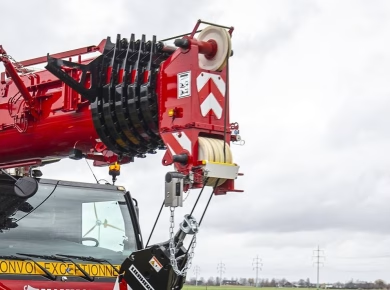Every safety stand down I’ve attended has had its own unique flavor, but too often, they fall into a predictable rhythm that can easily lead to disengagement. Picture this: a room full of workers, some checking their watches, others scrolling through their phones, all while a PowerPoint drags on with bullet points that could have been covered in a simple email. It’s a missed opportunity—not just for sharing vital safety information, but for fostering a culture where safety is not just an obligation, but a shared value. Revamping your approach to safety stand downs can transform them from mundane checkboxes into powerful experiences that resonate with your team.
Understanding the Importance of Engagement
Engagement during safety stand downs isn’t just about keeping people awake; it’s about instilling a sense of responsibility for one another. When team members feel involved, they’re more likely to internalize safety protocols and apply them on-site. Think about it: how many times have you sat through a presentation where you barely retained any information? Now contrast that with a lively discussion or a hands-on demonstration. Engaging your audience creates a memorable experience that can lead to better safety practices.
Make It Interactive
One effective way to increase engagement is to incorporate interactive elements. Rather than having a one-way presentation, invite participation. This could be as simple as asking open-ended questions or conducting polls to gauge opinions on safety measures. For instance, in a recent stand down, I facilitated a scenario-based discussion where workers shared their experiences with near misses. This not only sparked dialogue but allowed everyone to learn from real-life situations. The key is to create an environment where participants feel comfortable sharing their thoughts and experiences.
Utilize Real-Life Scenarios
When discussing safety protocols, nothing resonates more than real-life scenarios. Sharing stories of actual incidents—while maintaining confidentiality—can provide a powerful lesson on the importance of safety measures. For example, narrating a near-miss incident in which someone neglected to wear their personal protective equipment (PPE) and the consequences that followed can hit home in a way that statistics simply can’t. It’s about painting a picture that illustrates the potential risks and the importance of adhering to safety protocols.
Incorporate Visual Aids
Visual aids can greatly enhance understanding and retention. Instead of relying solely on text-heavy slides, use images, videos, or even props. A short video showcasing the correct use of a tool or the proper procedure for a high-risk task can break the monotony and keep attention levels high. In one of my recent sessions, I brought in a piece of equipment and demonstrated the correct safety checks. The hands-on element not only captured attention but also allowed for a practical learning experience that participants could relate to.
Gamify the Experience
Gamification is another strategy that can reinvigorate your safety stand downs. Incorporating elements of competition—like quizzes or team challenges—can elevate engagement levels. For example, consider a trivia game focused on safety regulations where teams can compete for small prizes. This not only makes learning fun but also reinforces critical safety knowledge in a memorable way. The friendly competition can lead to lively discussions and camaraderie, emphasizing that safety is a collective responsibility.
Foster a Culture of Open Communication
Creating an environment where team members feel comfortable voicing concerns or suggestions about safety practices is crucial. Encourage feedback during your stand downs, and make it clear that all input is valued. This could involve dedicating time for open forums where workers can discuss safety challenges they face on-site. In my experience, when workers see that their feedback leads to actionable changes, it fosters a sense of ownership over their safety culture.
Follow Up After the Stand Down
Engagement doesn’t stop when the stand down ends. Following up on the discussions and concerns raised can reinforce the importance of the topics covered. Consider sending out a summary of key points discussed, along with any action items that arose. This not only shows that you value their input but also keeps safety top of mind. Regularly revisiting the information shared during stand downs can help solidify the concepts and ensure they remain relevant.
Conclusion: Transforming Safety Culture Together
Transforming safety stand downs from a routine obligation into a dynamic and engaging experience requires a shift in approach. By embracing interactive elements, incorporating real-life scenarios, utilizing visual aids, and fostering open communication, you can create an environment that prioritizes safety as a shared value. The goal is to cultivate a culture where safety is not just practiced but lived, where each team member feels empowered to contribute to a safer workplace. As safety professionals, it’s our responsibility to make these crucial moments impactful and memorable. Let’s take the steps necessary to ensure our safety stand downs are as engaging as they are informative, because when everyone is invested, everyone benefits.



